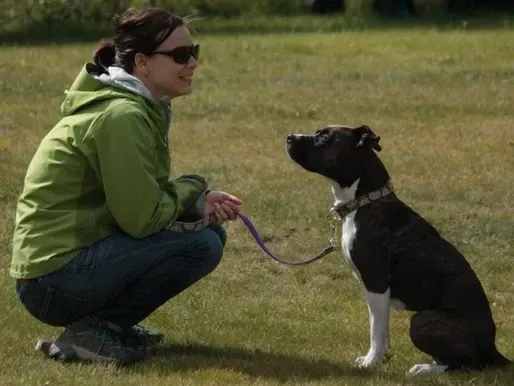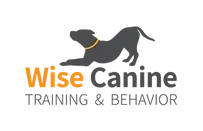BLOG
Dog training and behavior advice from Certified Trainer, Michelle Wieser

Reducing Fearful and Reactive Behavior
Reducing Fearful and Reactive Behavior
Learn about effective, positive training techniques to help address fear or reactive behavior in your dog.

Many dogs struggle to stay relaxed when they see another dog, a person, sound, or other trigger, and end up reacting with an intense stress response. For these dogs, it's extremely important to to address the underlying emotions that are causing your dog to react this way. Focus your training on decreasing stress around the trigger, and teaching the coping skill of self-interruption.
Teaching 'Look Away' and 'Eye Contact'
Reducing reactivity or fear involves desensitizing and counter-conditioning your dog to gradually feel comfortable around his triggers, as well as training a safe and appropriate response behavior.
First, we reward the dog for looking at the trigger, which helps the dog build positive feelings toward it. Then we reward the dog for turning away from the trigger and making eye contact with his handler. Working through this protocol has many benefits:
It prevents your dog from staring at a trigger and getting more worked up. This is important if the trigger is another dog because staring may cause the other dog to become defensive.
It helps change the dogs emotions to create a new, positive association with the trigger.
Your dog can alert you to a trigger if he sees it before you do.
It allows you to assess and determine if you should stay and train, move further away, or leave because the situation is too much for your dog.
Below, Timber is learning to turn away when she sees or hears ground squirrels. I'm working at a distance that is achievable for her, and we move closer as she is successful. No barking and lunging here!
Manage the environment
Become familiar with the triggers and situations that cause your dog to react. The science of animal behavior tells us that the more an animal practices a behavior, the more likely they are to repeat it. This is why it's very important to prevent a dog from practicing undesirable behavior like barking and lunging, while you train an alternative behavior like turning away.
The science of animal behavior tells us that the more an animal practices a behavior, the more likely they are to repeat it. This is why it's very important to prevent a dog from practicing undesirable behavior.
This means avoiding situations where your dog's triggers are abundant and hard to control. If your dog reacts to other dogs, start your training in areas where dogs are leashed. Remain at a safe distance until your dog is reliably looking away. You want your dog to practice looking away as much as possible so he develops a new habit around his triggers.
Avoid 'stacking' triggers and stressors
Have you ever had a really crap day where a handful of not-so-great things happened? On the way home someone cuts you off and you blow up in a fit of aggressive swearing and honking. The traffic incident was minor, but it was the last straw in a long day full of small stressors. When stress hormones build up we have less self control, and so do our dogs. This is called 'trigger stacking'. It's often the reason why a dog will behave aggressively seemingly out of nowhere.
When stress hormones build up dogs have less self control. Trigger stacking is often the reason why a dog will behave aggressively seemingly out of nowhere.
Stressful vet visits, traveling, moving, staying at kennel, getting in a dog-fight, or exposure to multiple triggers in a short period of time will cause your dog to build up stress hormones. If your dog has had a tough day (or days) give him time to recover in a quiet environment. Set him up to succeed and avoid situations and triggers that might result in reactive behavior.
Do you have a dog that struggles with fearful or reactive behavior? Contact me to discuss training. I'm here to help!
Need more details? Get in Touch.
I'm here to help. Contact me by email or social media.









